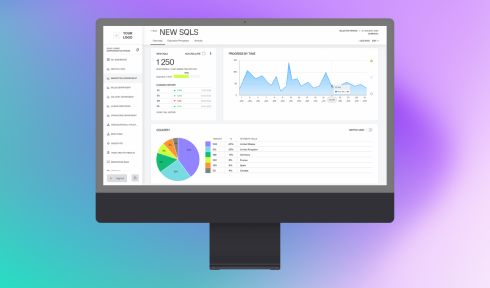The Importance of Planning
Proper planning is the cornerstone of any satisfied and successful person and business. It’s also a hot topic for magazines everywhere. You’ll hear from managers, mentors, and coaches about the value of properly setting up your day, establishing core goals, and action steps to reach them.
Something to consider for a successful plan is to make sure you remove unnecessary actions from your process and be consistent. Planning allows you to visualize a process from start to finish, making a big goal more manageable by breaking it down into smaller bite-sized steps.
Being disciplined in your scheduling is crucial. If your management team (or you if you are the management team) is too lax, in most cases, deadlines will be missed and communication and quality will usually suffer. A streamlined team that has a plan should know what to do, where to do it, and what doing it does for them, the project, and the company.
Why a Business Needs Good Planning
Direction
Before you start planning, there needs to be a purpose. A company’s success depends heavily on the clarity of its direction. This direction is what’s used to set roles and action steps that keep employees on track and focused on what they’re all doing and where the company is going.
Clarity
Having a goal doesn’t mean it’s clear how to achieve it. Planning creates clarity through actionable steps and guidelines that employees use to execute their roles properly.
Flow
There’s a direction and a goal, but now you need a stable flow of actions. High-level planning by top managers and middle managers creates clean, easy-to-follow processes that employees run manually, semi-manually, or automatically.
Control
A solid plan allows for control; there’s a direction, a goal, and a process. This can be mapped and tracked, allowing management at all levels to follow a process from project planning to project launch and completion.
So what can be done to ensure that actions lead to the desired result?
Related Experience

How Planning Happens
Planning is necessary if you want to allocate resources and time to accomplish goals. Goals and objectives require a specific set of processes to be followed, tools to be used, and time to complete.
Planning a project often consists of several steps:
1. Choosing a planning technology.
2. Determining the composition of the work.
3. Determining the timing and order of work.
4. Planning the budget.
5. Planning for quality.
6. Risk planning.
Although planning implies an apparent adherence to an orderly strategy, this does not mean that all points must be rigidly adhered to. It’s worth keeping in mind that planning flexibility is as important as planning itself. Strict fulfillment of the plan at all costs can negatively impact quality and performance, operational costs, the emotional and motivational component of the team, and even the authority of management or superiors.
A rigid focus only on achieving established indicators can deprive a company of necessary market flexibility: the initiative is no longer encouraged, and potential profits are missed.
The Planning According to Z to A Concept
For myself and my company, I’ve chosen to plan according to the Z to A concept, which implies a path from large to small, and it inherently intersects with the very meaning of planning for business when we talk about direction, clarity, flow, and control. First, we formulate a goal, break it into objectives, and only after that, act.
We begin planning by formulating and outlining the result, our “Z”-the global bottom-line goal. It can be challenging to make a step-by-step plan because it’s not always obvious how much time it will take to perform and which actions should lead to the desired result. For more straightforward navigation, you should take the final goal and reel it back to intermediate goals until you arrive at where you are.
This backward planning helps you properly assess deadlines and how long it takes to accomplish the target. This approach has proven to be productive. You determine specific steps to achieve a goal based on where you want to be at a certain point.
Here’s a schematic example of backward planning:
1. Specify a global goal.
2. Formulate the desired outcome and set deadlines.
3. Write down the events from the desired result to the point you’re at.
4. Write down a list of tasks that are needed to realize these events.
5. Examine the Key Success Factors that can affect execution: resources, time, human capital, etc.
6. Proceed with implementation.
Planning Point #0
The primary condition for completing a project is the ability to adjust to the current situation. It’s hard to deny that often we can go outside a plan’s guidelines while executing it. I always recommend that my team keep point #0 in mind. It’s a universal point for every undertaking. Why do I do this?
When we make an accurate plan, we see its implementation from the starting point, which is the moment we make it. Later we receive new data, and we can develop a slightly better plan from a new position: give up something, add something. Zero point allows our brains to avoid resisting the improvements that come a bit later. Finally, we devise operational (long-term) plans and realize they won’t end up exactly as we initially thought. I don’t stop the planning phase there when I put a plan into action. Instead, I focus my efforts on making the plan even better based on new information that may come during execution and immediately apply the improvements.
To leverage my team’s performance potential, it’s necessary to break down the process of getting to a big goal into small control periods, with the mandatory completion of tasks within a specific small time frame, for example, in a week. This approach keeps the team highly motivated and individual members engaged throughout the process, thus increasing the likelihood of achieving the goal. In addition, such a breakdown makes it possible to monitor the current state of affairs and make timely adjustments to the plan and the work itself.
Conclusions
Planning implies the conscious and purposeful activity of the team on the way to the result, during which it’s necessary to set tasks, divide them into stages, and anticipate deadlines. It’s essential not to forget the zero point and always be ready to adjust as effectively as possible to the current conditions.
Plans for the next day/week/month/year should always be scheduled and can be subject to re-planning at any point in time. Various external and internal circumstances often influence it.
Get expert advice on digital transformation of your business, contact us at info@computools.com.

Computools
Software Solutions
Computools is a digital consulting and software development company that delivers innovative solutions to help businesses unlock tomorrow.









“Computools was selected through an RFP process. They were shortlisted and selected from between 5 other suppliers. Computools has worked thoroughly and timely to solve all security issues and launch as agreed. Their expertise is impressive.”